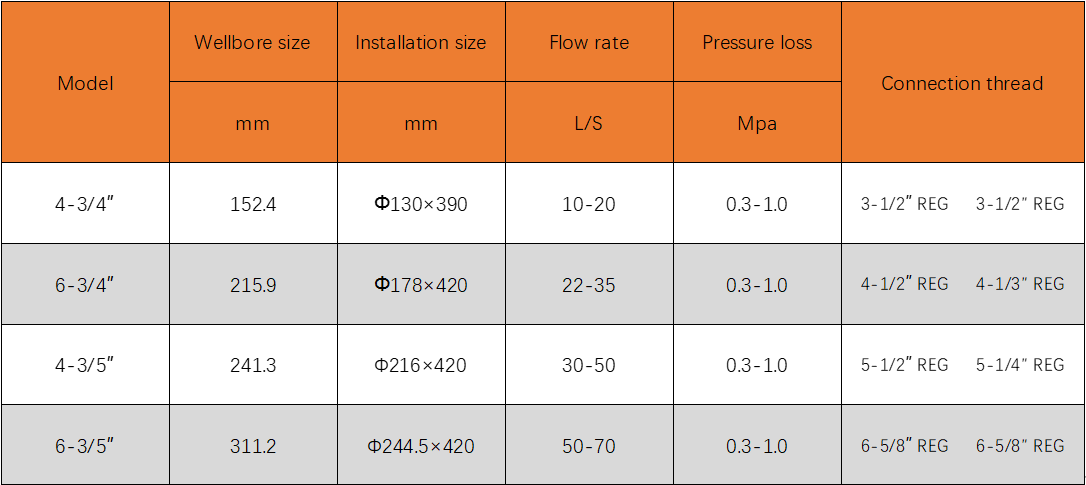Acceleration Tools
We have two series of hydraulic oscillators, P and M series.
2.1 Hydraulic oscillator
Hydraulic oscillator is a downhole tool used to solve bottom hole holding pressure and improve the transmission of WOB. It is especially suitable for use in directional wells, extended reach wells and horizontal wells. It can be used simultaneously with MWD, downhole drilling tools and any drill bit.
We have two series of hydraulic oscillators, P and M series.
2.1.1 Hydraulic oscillator-P Tool features:
·Power part: Use advanced technology to optimize the linear design of the motor and increase the oscillation frequency to 16-17HZ; the power section has the advantages of stable operation and strong adaptability.
·The unique fixed valve design allows you to select and install the appropriate moving valve according to the on-site displacement.
·Design of double pressure chamber: low pressure consumption, pressure consumption is 400-500PSI, vibration is stable, vibration force is increased, and vibration amplitude is 3-10mm.
·The vibration is smooth, will not interfere with the instrument signal or damage the drill bit.
Technical parameter table

2.1.2 Hydraulic oscillator-M
Hydraulic oscillator-M is made of all metal parts including the power section, and the main part does not contain rubber components. It is widely applicable to various drilling conditions and can be used normally in high-temperature wells, oil layer drilling and other conditions that conventional tools are not suitable for.
Hydraulic oscillator-M Tool features:
·All parts are made of metal, suitable for use in special extreme environments such as ultra-high temperature, saturated salt water, high oil content, etc.
·The power part uses a large-diameter low-speed turbine or a rotating cam. (It has the characteristics of large flow hole area and large rotating gap effect that conforms to the direction of water flow).
·The amplitude of the oscillating sub-section is 3-15mm, which enables high-frequency creep of the drilling tool to effectively relieve the holding pressure.
·Changing the flow area during operation of the rotary valve can produce periodic hydraulic impact force.
·The compensation system can effectively increase the impact force, reduce tool pressure loss, increase tool reliability, and can quantitatively adjust the impact force and pressure loss according to the use conditions.
Performance comparison


Technical parameter table

2.2 Hydraulic impactor
Working principle:
·The Hydraulic impactor is a tubular tool installed on top of the drill bit. It can provide stable high-frequency forces of 750 to 1500 times per minute, allowing the drill bit to cut the formation without accumulating force. Fast and smooth drilling is achieved. The impactor changes the rock breaking method of PDC bits.
·After using the hydraulic impactor, the torque of the drill pipe is basically stable.
Tool features:
·The structure is simple and reasonable, and the power part is entirely mechanical in design, with no electronic components or rubber parts. Suitable for complex conditions such as deep wells, high temperature wells, geothermal wells, etc.
·Plays a balancing and stabilizing role in downhole vibration (lateral/longitudinal/torsional vibration or resonance) of the drill bit.
·The working pressure decreases. Due to the turbine structure, the working pressure drop is about 1Mpa and the energy conversion efficiency is high.
·The impact frequency is high, much higher than the tool based on pressure difference driving principle.
·The short length, L=0.42m, has little effect on the slope rate of the drilling tool.

Technical Parameter Table


